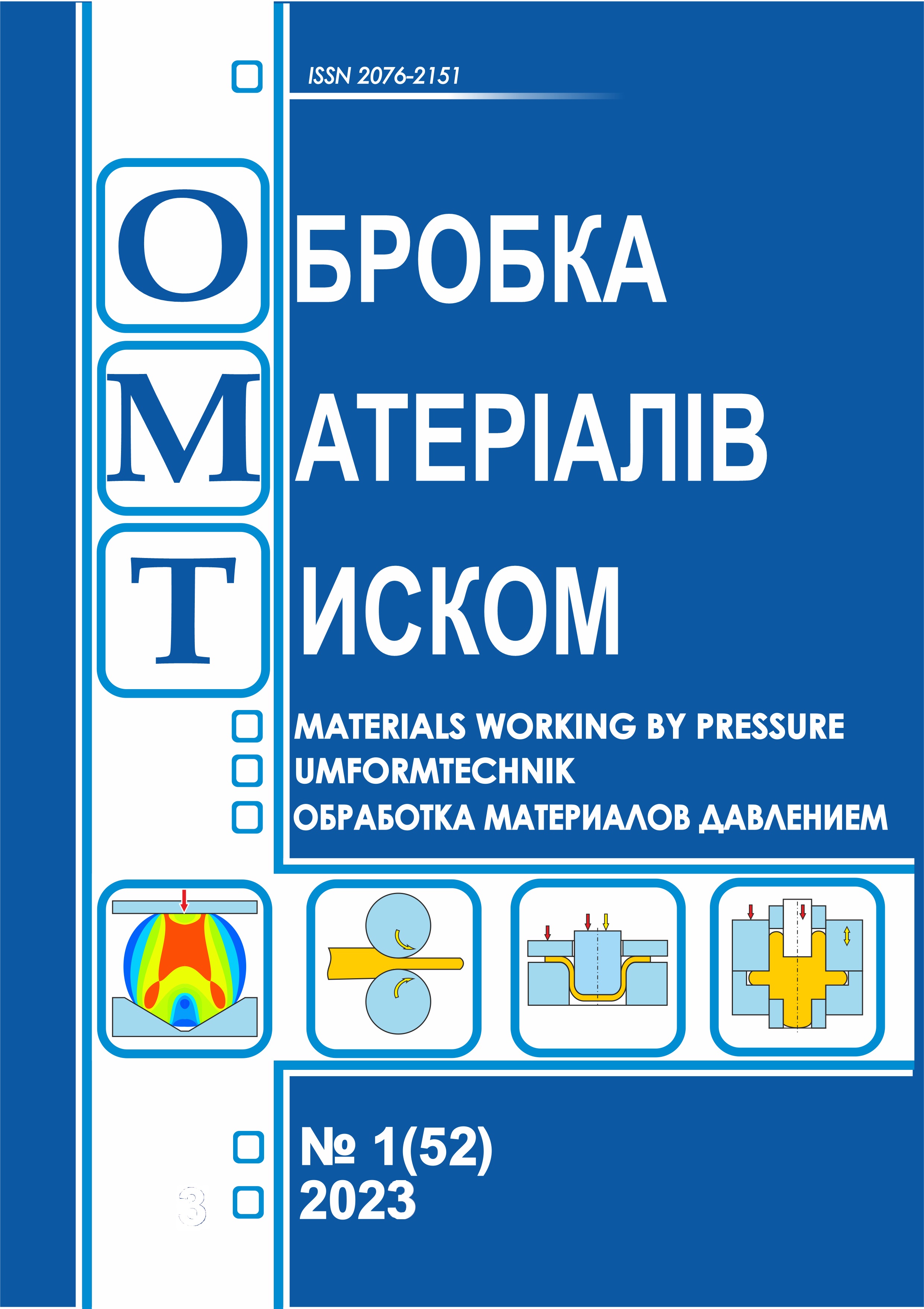FEM study of the drawing method of hollow forgings with a bottom without a mandrel
DOI:
https://doi.org/10.37142/2076-2151/2023-1(52)3Keywords:
thick-walled workpiece, drawing, deformation, hole forging, FEM, stressed state, deformed state.Abstract
Markov O., Khvashchynskyi A., Musorin A., Lycenko A. FEM study of the drawing method of hollow forgings with a bottom without a mandrel.
The method of drawing thick-walled hollow billets has been studied. The proposed method consists in the deformation of a hollow billet without a mandrel. A technique for conducting theoretical studies of the FEM has been developed. The technique is designed to determine the thermal, deformed state and shape change of the workpiece when forging hollow workpieces without using a mandrel. The variable parameters were the inner diameter of the hollow billet, which varied in the range of 0.30; 0.55; 0.80. On the basis of finite element modeling, the following were established: the distribution of temperatures and the intensity of logarithmic deformations in the volume of the pipe after drawing without using a mandrel. The diameter of the pipe hole, which is formed when broached by this method, was determined. The dependences of the intensity of elongation and thickening of the pipe wall were established. A special indicator has been developed to evaluate pipe elongation. It was determined that with an increase in the inner diameter, the elongation of the pipe increases and the intensity of the forging of the hole decreases. The general de-pendence of the simulated broach schemes is that the value of elongation of the hollow billet does not change significantly for different degrees of compression at constant relative dimensions of the pipe. This made it possible to set the recommended feed to increase the elongation of the hollow forging and reduce the degree of hole closure. The rational feed should be (0.05...0.15)D. The results of finite element modeling were verified by experimental studies on lead samples. An experimental modeling technique was developed. It has been established that at the inner diameter of the billet (0.5...0.6)D, there is a maximum wall thickening. It has been established that the results of the workpiece shaping, obtained in the theoretical study of the FEM, are 9...14% more than the experimental ones. The reliability of the results of theoretical modeling is confirmed by experimental data on reducing the inner diameter of the pipe. The difference between theoretical and experimental results is 9...12%. The established regularities make it possible to determine the final diameter of the pipe hole. Based on the simulation results, it was found that drawing pipe billets without a mandrel is possible. This method expands the possibilities of technical processes for the manufacture of pipe blanks.

